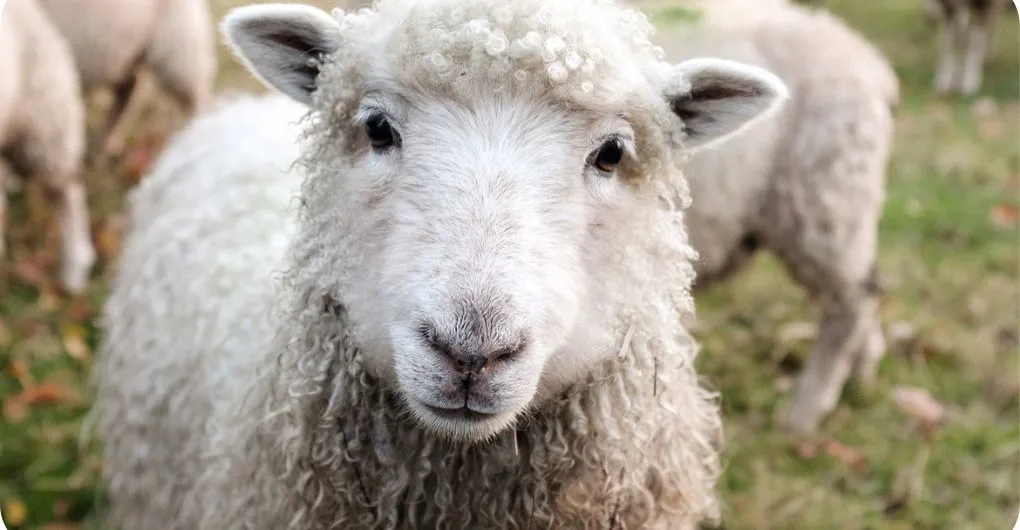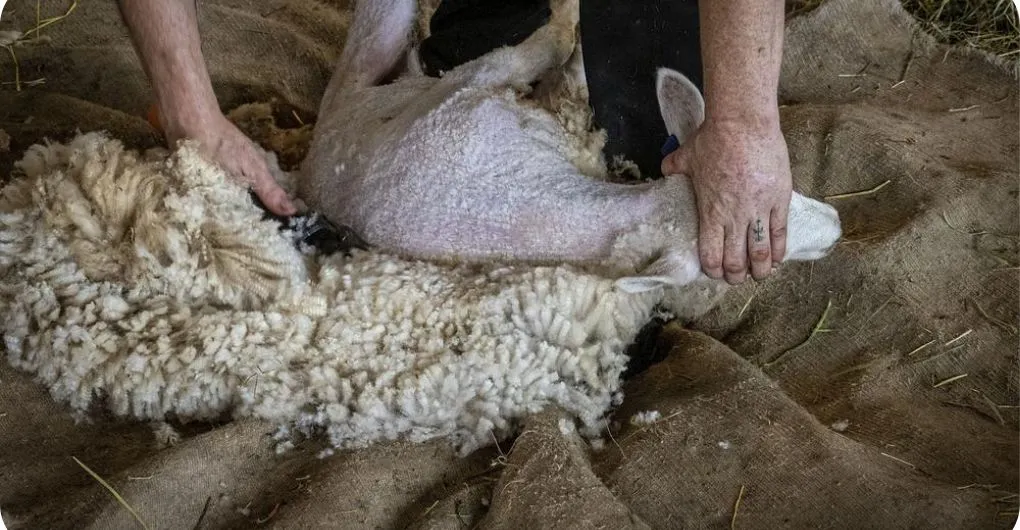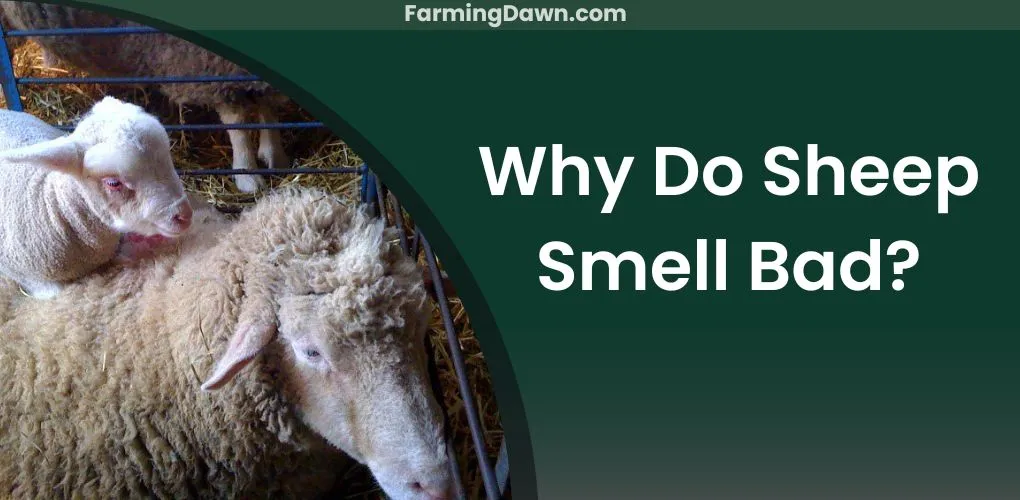When it comes to sustainable agriculture, Targhee sheep are a fantastic choice. Targhee sheep have soft and luxurious wool and delicious meat, developed in the United States. These hardy animals are known for their ability to graze on a variety of vegetation, including tough grasses and brush.
By grazing on diverse plant life, Targhees help to boost soil health and minimizes the need for artificial fertilizers. Today, I will give a complete review of the Targhee sheep farming. Their characteristics, types, origin, color, wool type, and disadvantages, each and everything will be covered in this article.
Targhee Sheep Origin and Color
Origin
Targhees are a popular breed of sheep originated in the United States. They were first bred in the early 1900s in Dubois, Idaho, by crossbreeding three different breeds of sheep – Rambouillet, Lincoln, and Corriedale. The aim was to create a breed that could withstand the harsh winters and hot summers of the western United States.
The Targhee sheep breed was named after the Targhee National Forest, which is located in eastern Idaho and western Wyoming. The forest is known for its rugged terrain, harsh climate, and abundant wildlife, including bighorn sheep, elk, and grizzly bears. The Targhees were well-suited to this environment and became a popular breed among sheep farmers in the region.
Today, Targhee sheep are raised across the United States, particularly in the western states, including Idaho, Montana, Wyoming, and Colorado. They are also raised in Canada, where they are employed in the production of both wool and meat.
Targhee Sheep Color
Targhee sheep come in various colors, although the most popular is white. This color is not only aesthetically pleasing, but it also has practical benefits. White wool is easier to dye and can be used for a wider variety of products than colored wool. Additionally, white sheep are less likely to attract predators in the wild.
Some Targhees may have small patches of color on their faces or legs, but these are not common. Breeders strive to maintain the purity of the Targhee’s white coloration to maximize the wool’s versatility and marketability.

Targhee Sheep Characteristics
Targhees are renowned for their resilience and ability to adapt to different climates. They are medium-sized, with a mature weight of 150-200 pounds for rams and 120-160 pounds for ewes. They have white wool and a distinctive black face.
High Fertility Rate
One of the unique characteristics of Targhee sheep is their high fertility rate. They are known for producing large litters of lambs, which makes them a popular choice for commercial breeding operations. Targhees are also excellent mothers, with a strong maternal instinct and a tendency to produce plenty of milk to feed their young.
Easy To Handle
Targhees are a docile breed and therefore easily manageable. They are also popular among hobby farmers and small-scale producers who are looking for an easy-to-handle breed of sheep.
Versatility in Wool and Meat Production
Another advantage of Targhees is their versatility. They are raised for both meat and wool production and are known for their high-quality fleece. Their wool is soft and springy, with a medium crimp and excellent elasticity. It is often used in the production of fine garments and high-end textiles.
Adaptability to Different climates
Finally, Targhee sheep are well-suited to a range of different climates and environments. They are hardy and adaptable, with a thick wool coat that helps them stay warm in cold temperatures. Targhees are also resistant to many common diseases and parasites, making them a low-maintenance breed of sheep.
Targhee Sheep Uses
One of the primary uses of Targhee sheep is wool production. Their wool is known for its softness, durability, and elasticity, and is used to make a variety of products, including clothing, blankets, and carpets.
In addition to wool production, Targhees are also used for meat production. Their meat is lean and flavorful, making it a popular choice among consumers who are looking for high-quality, locally-sourced meat.
Targhee sheep are also used in conservation efforts, particularly in areas where their grazing can help maintain and restore native grasslands. Because they are hardy and adaptable, Targhees can thrive in a variety of environments and can be used to control invasive plant species and promote the growth of native vegetation.
Another use of Targhees is in the production of milk and cheese. While they are not as well-known for their milk production as some other breeds, Targhees do produce rich, creamy milk that is ideal for cheese-making.
Why Raise Targhees?
Raising Targhees offers a wide range of benefits for the farmer, as well as for the environment.
Video Guide
For Wool
As I mentioned before, Targhees are an ideal breed for farmers who want to produce high-quality wool. The breed is known for its fine wool, which is perfect for spinning and weaving. This means that farmers can sell their wool at a premium price, which can be a significant source of income.
For Meat Production
Targhees are also an excellent choice for meat production. The breed is known for its tender meat and high yield. This means that farmers can produce a lot of meat with fewer animals, which is more cost-effective and better for the environment.
Withstand Harsh Climates
They are a hardy breed which can tolerate adverse weather. Targhees are resistant to diseases and parasites, which means that farmers can spend less on veterinary bills and medications.
Easily Manageable
Targhee sheep are easy to handle and manage. They are docile and friendly, which makes them ideal for small-scale farmers or hobby farmers who do not have a lot of experience with livestock. Also learn why do sheep need a shepherd for management of the flock?
Environment Friendly
Targhees are good for the environment. They are a sustainable breed that can be raised using organic and regenerative farming practices. This means that farmers can raise them without using toxic chemicals or harming the surroundings.
Targhee Sheep Wool
Targhee wool is known for its softness and loftiness. The fibers have a crimp, which helps the wool to trap air and retain heat, making it perfect for warm winter garments. Targhee wool is also naturally elastic, which means that it can stretch without losing its shape.
One of the best things about Targhee wool is that it is easy to spin and dye. The fibers are long and lustrous, with a diameter of around 22-25 microns, making them ideal for a range of different spinning techniques. And because the wool is so easy to dye, it comes in a wide variety of colors, from natural shades of white, grey, and brown, to bright and bold hues.

But Targhee sheep wool is not just prized for its physical properties. It is also highly ecological friendly and sustainable. Targhees are raised on pasture-based systems, which means that they are free to graze on natural grasses and other vegetation. This helps to promote healthy soil, reduce erosion, and sequester carbon, making Targhee wool an excellent choice for eco-conscious consumers.
Targhee Sheep Pros and Cons
Targhee Pros |
Targhee Cons |
| Targhee sheep are hardy and can tolerate harsh weather conditions, making them suitable for various climates. | Targhee sheep are a relatively new breed, so there is limited information available on their long-term performance. |
| They are prolific breeders and can produce a high number of lambs per year, which can be advantageous for commercial producers. | They have a higher susceptibility to internal parasites, which can be a problem in areas with a high parasite load. |
| Targhees have a high-quality fleece with a soft and fine texture, making it desirable for wool production. | Targhees are not as resistant to foot rot as some other breeds, which can be an issue in wet environments. |
| They are docile animals that are easy to handle, making them a suitable option for new shepherds. | Targhee sheep can be prone to injuries due to their larger size compared to some other breeds. |
| Targhee sheep are known for their good mothering instincts and can take care of their young without much intervention from humans. | They have a high feed efficiency, meaning they can easily gain body fat, which can be cause serious health issues. |
FAQs Related to Targhee Sheep
What type of wool does a Targhee sheep have?
Targhees are a breed of domestic sheep that are known for their high-quality wool. The Targhee breed produces fine wool that is often used in the textile industry for making clothing and other products.
What is Targhee wool good for?
Targhee wool is known for its softness, warmth, and durability, making it ideal for a variety of applications. This type of wool is commonly used to make garments, blankets, and other products that require warmth and comfort.
Where are the Targhee sheep from?
The Targhee sheep is originally from the United States and was developed in the early 20th century in Idaho. The breed was created by crossing Rambouillet, Lincoln, and Corriedale sheep, resulting in a hardy and versatile animal that can thrive in a variety of environments.
Are Targhee sheep good for meat?
While Targhee sheep are primarily known for their wool production, they can also be used for meat. The meat from Targhees is considered to be of high quality and is often used in gourmet cooking. However, the breed is not as popular for meat production as other sheep breeds, such as the Suffolk or Hampshire.
Take Away
In conclusion, Targhee sheep are a versatile and valuable breed that can be raised for their high-quality wool, meat, or milk. They are a hardy breed well-suited to various climates and can thrive in both pasture-based and feedlot systems.
By raising Targhee sheep, farmers can diversify their income streams while also contributing to the preservation of a valuable breed. With this much information, I hope you can decide whether to raise this breed on your farm or not. If you liked this post, share it with your friends who might be interested in Targhee farming.





